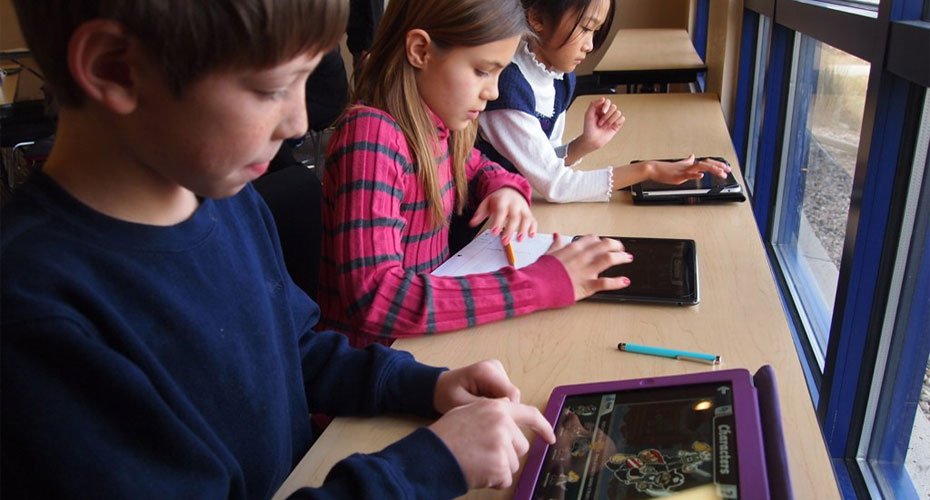Visit 3 Activity 6
Punctuating direct speech
10:16– 12:01
Context:
Children are sitting in pairs at their tables in rows, looking at the IWB. Their Chromebooks are closed. They have been working for an hour. The children will learn to punctuate direct speech, using ChatterPix Kids, and by composing a statement made by their chosen creature, for punctuation. This activity is introduced as “new learning” that will be needed for Year 4.
Key activities
- Teacher introduces new task: to begin to punctuate direct speech
- Shared reading followed by partner work to identify direct speech and speech punctuation on IWB
- Teacher introduces ChatterPix Kids app and models its use
- Children record an animation with direct speech in ChatterPix Kids
- Children replay their animations and transcribe oral language onto paper
- Teacher demonstrates how to punctuate direct speech and add reporting clauses to transcription of narration
- Children volunteer to identify direct speech and add speech punctuation to text on IWB
- To identify language that is spoken and begin to be able to punctuate this formally, using speech marks
- In a fun and engaging way, ChatterPix Kids will help the children to identify the spoken part of direct speech. They will explore and practise the voice of the creature, record their voices and write down what their creature says.
- Chromebooks (one per child)
- Interactive scene: The Bewitched Forest – Inspire Literacy
- ChatterPix Kids
- Managing introduction of new technology - excitement
- Teacher demonstrating use of ChatterPix Kids to record direct speech
- Teacher modelling how to compose in role (write as a character)
- Teacher modelling how to identify direct speech in written text
- Teacher explaining and modelling how to punctuate direct speech
- Reading text with direct speech
- Distinguishing speech from non-speech in written text
- Recognising punctuation marks in written text
- Speaking in role as character
- Composing orally - talking in role – “I am…”
- Translating oral speech to written speech, by listening/ watching-back ChatterPix Kids
- Playing and replaying to check and correct
- Adding speech marks to direct speech
- Do children enjoy working with ChatterPix Kids to compose speech in the first person?
- Does use of digital resource promote excitement and engagement?
- Do the children enjoy working in role to compose?

Lesson Commentary
Introduction
Teacher introduces new task: to begin to punctuate direct speech
Teacher explains that there will be new learning for year 4 in the next activity. Children are asked to talk to each other about how they can identify direct speech. Children work with a partner to explain how they identify direct speech, using three sentences presented on the IWB that have been taken from the ebook.
- The use of ChatterPix Kids (digital resource) is scaffolded by more formal writing activities, e.g. practising punctuating speech, using coloured pencils for inverted commas
- Teacher modelling of how to use the digital resource is a necessary stage
- Presenting a completed version of the animation in ChatterPix Kids gave children confidence with what they had to do
- As previously, the use of digital and more formal writing resources and activities are blended to scaffold the children
- The children can all work together, as they do not appear to ‘finish’. This aids classroom management, as engagement is ongoing
- Collaboration is promoted by the use of the Ipads and ChatterPix Kids
- The children are very noisy but engaged
- The children engage easily with the requirement to step into role to compose, using the resource
- Prior experience using ChatterPix Kids app is necessary to support modelling
- How to take and import images from the interactive scene’s characters into ChatterPix Kids
- The use of digital resources blends well with more formal activities and resources
- Children will work at different rates, but the blend of resources seems to help maintain engagement
- Expect the working environment to be very noisy and productive
- The teacher’s role varies through the lesson – from guide to observer/ participant
- Time can be used to refocus children at key points and allow them to share their ideas, as part of the composing process
